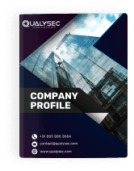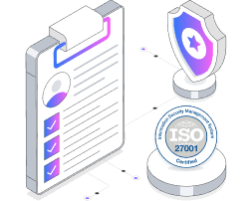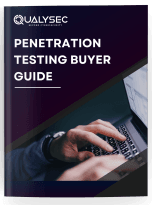SaaS Security Compliance Checklist: A Complete Guide
Securing SaaS data involves a shared responsibility model and strong security practices. This Saas Security Compliance Checklist provides important strategies for securing sensitive information in SaaS environments with a focus on proactive measures, new technologies, and ongoing monitoring to avoid breaches and maintain compliance. SaaS Security Checklist Key Takeaways Adopt a Security-First Mindset: Secure APIs and Encrypt Data The SaaS Security Compliance Checklist includes actionable steps to respond rapidly to incidents, minimize damage, and ensure business continuity through backups and simulations. With the extensive use of SaaS, data security issues have grown progressively important. SaaS applications maintain enormous volumes of sensitive information, such as personal, financial, and proprietary business data. As a result, companies find it difficult to safeguard their SaaS data against insider threats and expensive cloud data breaches. In particular, the latter is the costliest form of data breach, averaging USD 5.17 million. Most organizations mistakenly believe that SaaS vendors are solely responsible for securing all sensitive information. However, SaaS security is based on a shared responsibility model, where data security is primarily the customers’ responsibility. SaaS vendors, in turn, are typically responsible for protecting the SaaS infrastructure, such as the network, applications, physical security, data centres, and underlying software and hardware. In short, your data is your responsibility. Implementing robust security controls and best practices is crucial to protecting SaaS data, yet it requires skills, expertise, and technologies. We’ve prepared this SaaS security checklist to gather all best practices and expert recommendations for SaaS data security. Let’s protect your SaaS data together. Adopt a Security-First Mindset A security-first culture embeds security in all business processes. Organizations with this culture continually aim to embed security controls and take on practices aimed at preventing, monitoring, and responding to security threats effectively. A security-first culture is data security and protection awareness-based, and therefore, companies should depend highly on recurring security awareness and training. Integrating a SaaS Security Compliance Checklist can help organizations stay consistent with this approach. Provide regular security awareness training A major advantage of frequent security awareness training is boosts cybersecurity. Through education of employees regarding typical threats to SaaS data, including phishing attacks, malware, and social engineering, companies can minimize exposure of the most sensitive information to these dangers. Acknowledging the value of human assets in protecting their SaaS environments, three out of every ten (68%) organizations augmented investments in educating personnel on SaaS security. Establish clear security policies The second critical aspect of a security-first culture is setting clear security policies. Data security policies offer directions and procedures for safeguarding sensitive SaaS data against unauthorized use, breaches, and other forms of security attacks. Critical elements of data security policies include: Access controls: control who has access to what data and under what conditions and reduce exposure of data; All of the above are core components of a SaaS Security Compliance Checklist. Conduct threat modeling and automate security testing Including threat modeling within a security-first approach to system design, development, and operation is required for active control of risks and safeguarding against future threats. A security-first approach emphasizes considering security early and throughout the life cycle of all system components and aspects. Within this method, threat modelling is essential since it systematically discovers, analyzes, and evaluates possible attacks, vulnerabilities, and attack modes before they have the opportunity to be exploited. Implement DevSecOps practices DevSecOps is an important part of the overall security culture. DevSecOps – development, security, and operations – is a methodology that weaves security into every aspect of the software development life cycle. Companies implement this methodology to minimize the threat of exploitation of vulnerabilities by hackers. Such intrusions are expensive, time-consuming, and reputation damaging to a business. The 2025 Verizon DBIR finds that the exploitation of vulnerabilities is now the leading way to initiate breaches, with more than threefold growth over the last two years This growth corresponds to the MOVEit vulnerability and other zero-day attacks. The DevSecOps methodology lowers the threat of deploying software with misconfigurations and other vulnerabilities that can be exploited by bad actors. Implement Strong Identity and Access Management (IAM) Controls Verifying the identity of a user is one of the SaaS environment’s fundamental prerequisites to remain secure and compliant. Although the identity concept itself is simple to grasp, making it practically secure is trickier than it may appear. Older username and password mechanisms cannot safeguard SaaS data. A Ticketmaster data breach involving a record 550 million is indicative of this, having resulted from an intrinsic failure in IAM on a third-party cloud-based storage facility. So, let’s look at what the effective IAM controls are. Enforce multi-factor authentication (MFA) Multi-factor authentication (MFA) is a requirement and one of the best-practice CIS controls being adopted to safeguard SaaS data. MFA is an easy and secure method for applying an additional layer of security beyond the standard username and password. Cloud giants like Google Workspace and Microsoft 356 offer MFA features—e.g., AWS MFA or Google MFA —to safeguard cloud data. When MFA is activated, users are required to authenticate with two (or more) factors, which are: Something the users know (their PIN, password, or username); NOTE: IAM strategies and techniques are continually evolving, and so are hackers’ techniques. It is not practical to depend solely on MFA as the single IAM control. Attackers are now targeting post-authentication attacks that evade MFA entirely, and there are more than 1 million attacks per month deployed with the MFA-bypass tool EvilProxy. Attackers who fail to steal user credentials steal proof of authentication instead. But MFA bypassing itself is not a reason to abandon MFA. But other IAM controls have to be put in place alongside MFA. Implement role-based access control (RBAC) In SaaS, RBAC is essential in protecting sensitive SaaS data. RBAC controls access by compartmentalizing permissions into roles and responsibilities, providing users with access to only the data and features necessary for their roles. For instance, using Google Workspace RBAC, users can assign roles based on: Job responsibilities: Regularly review user access rights




